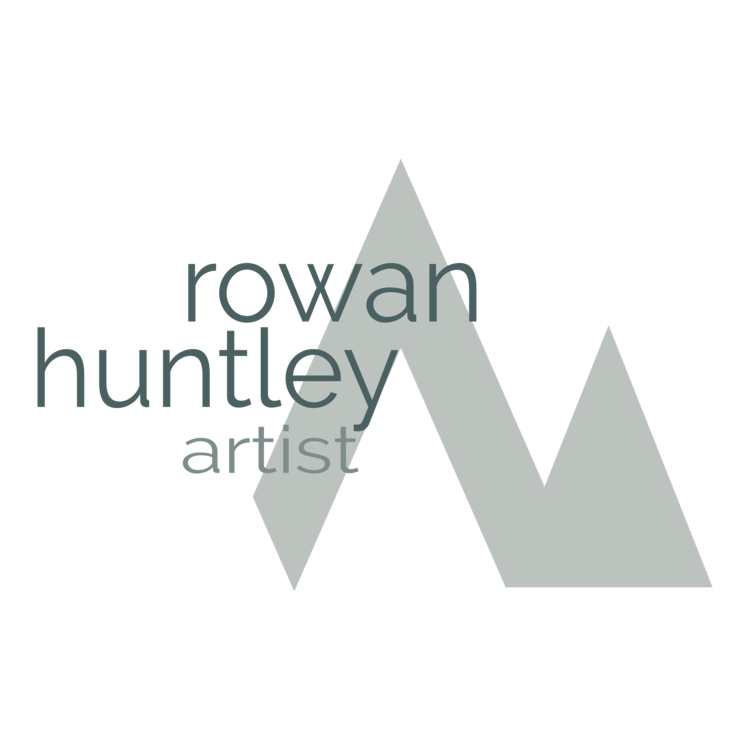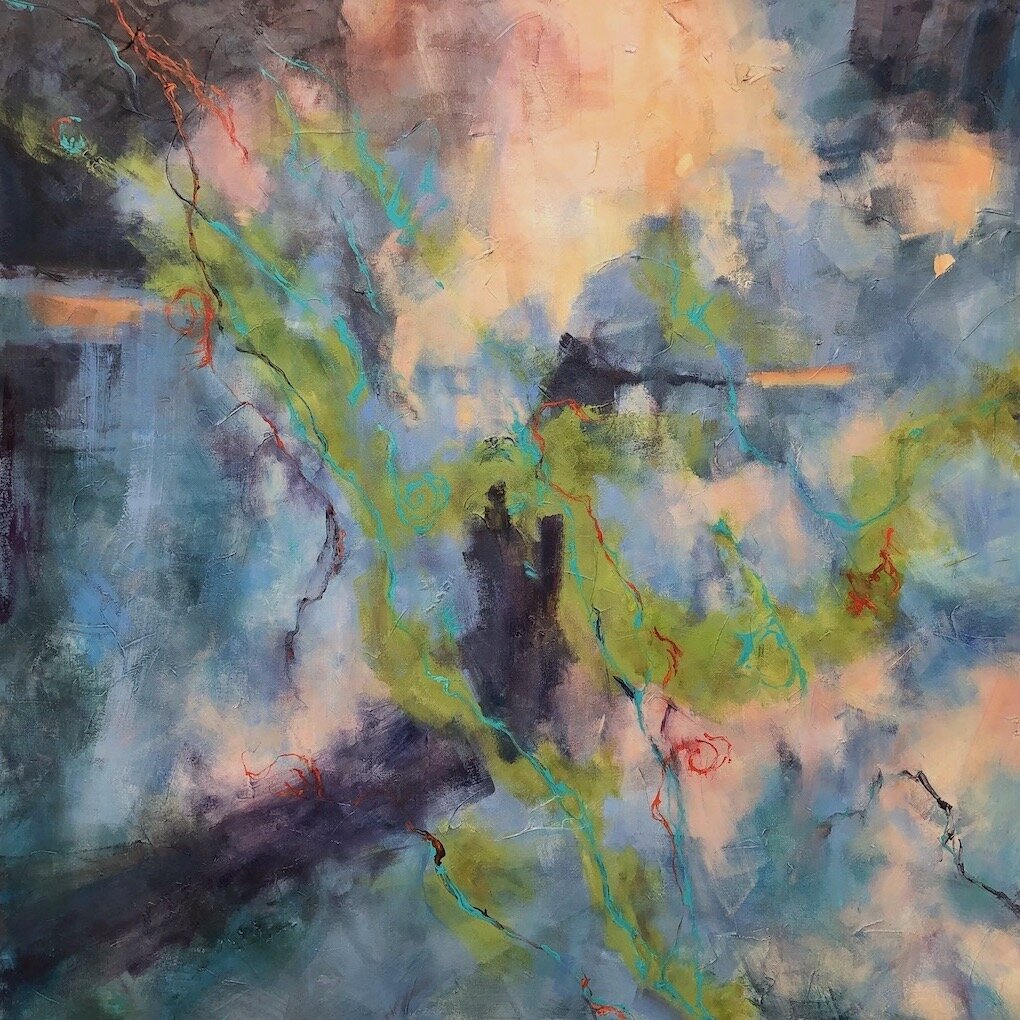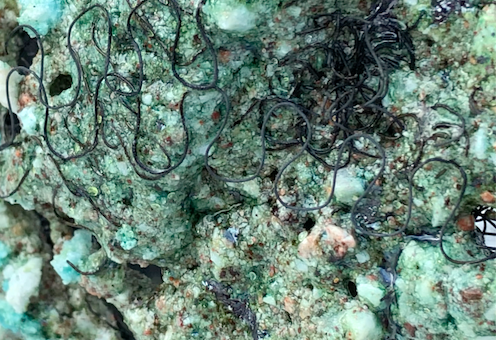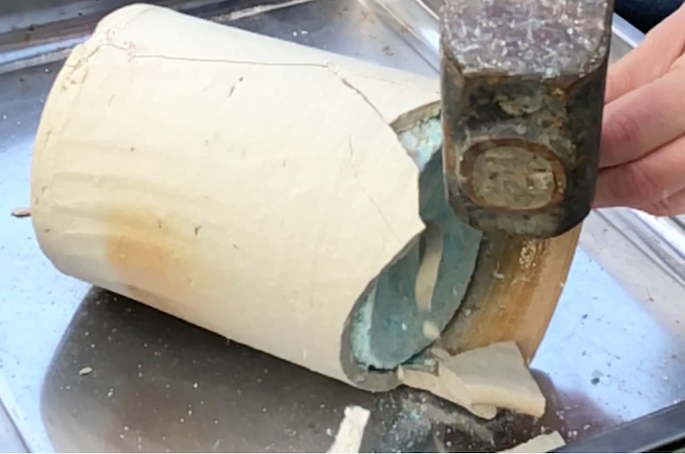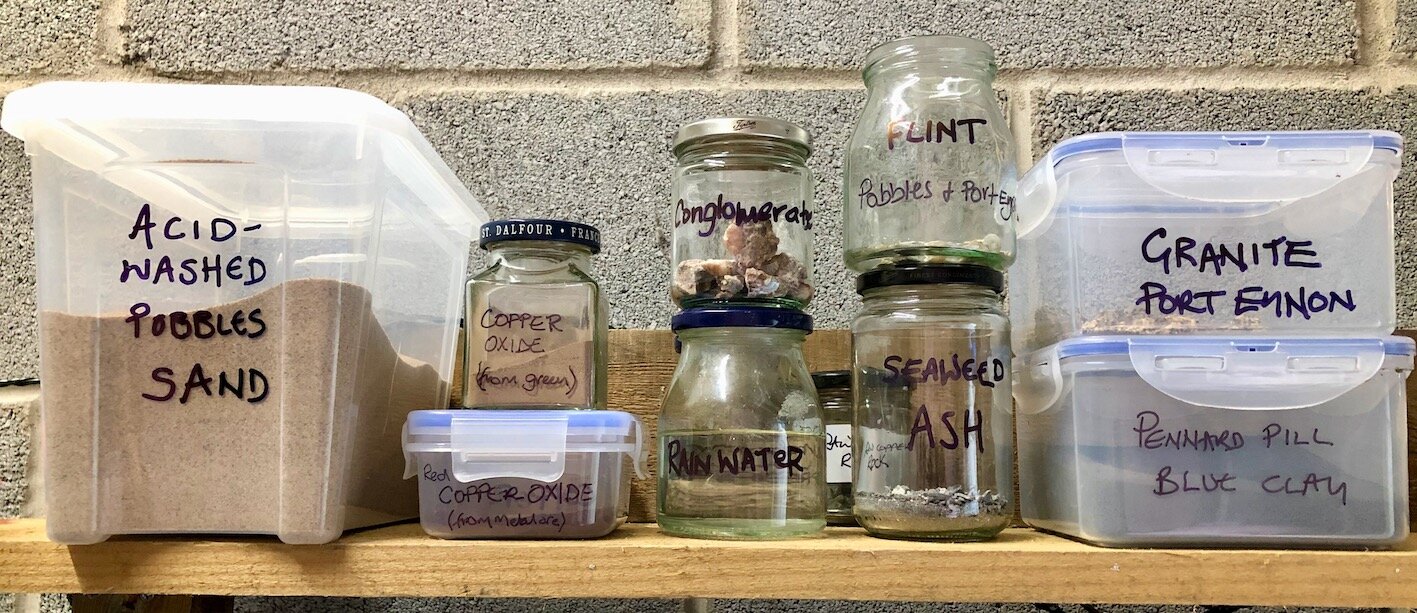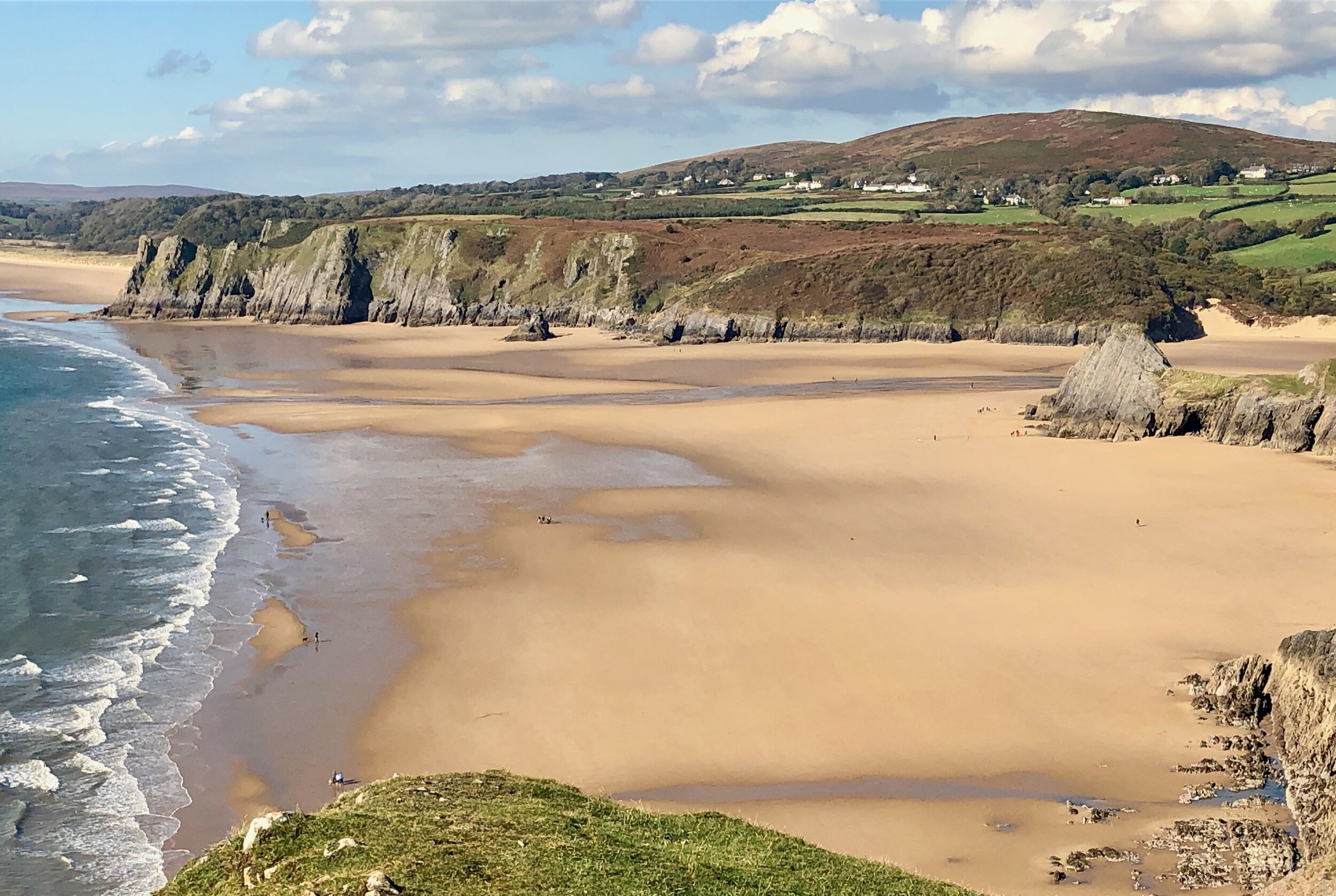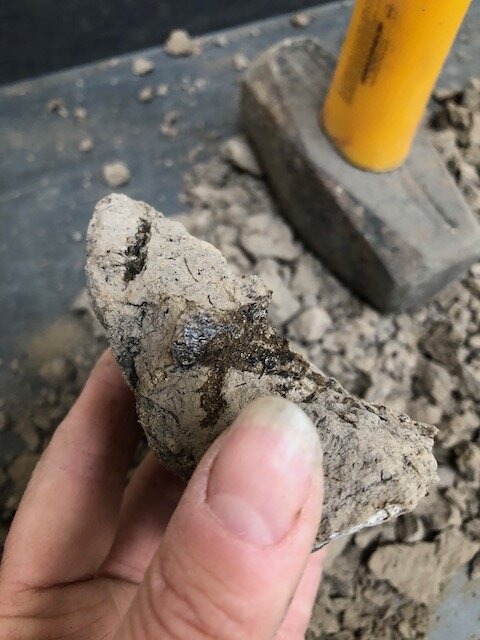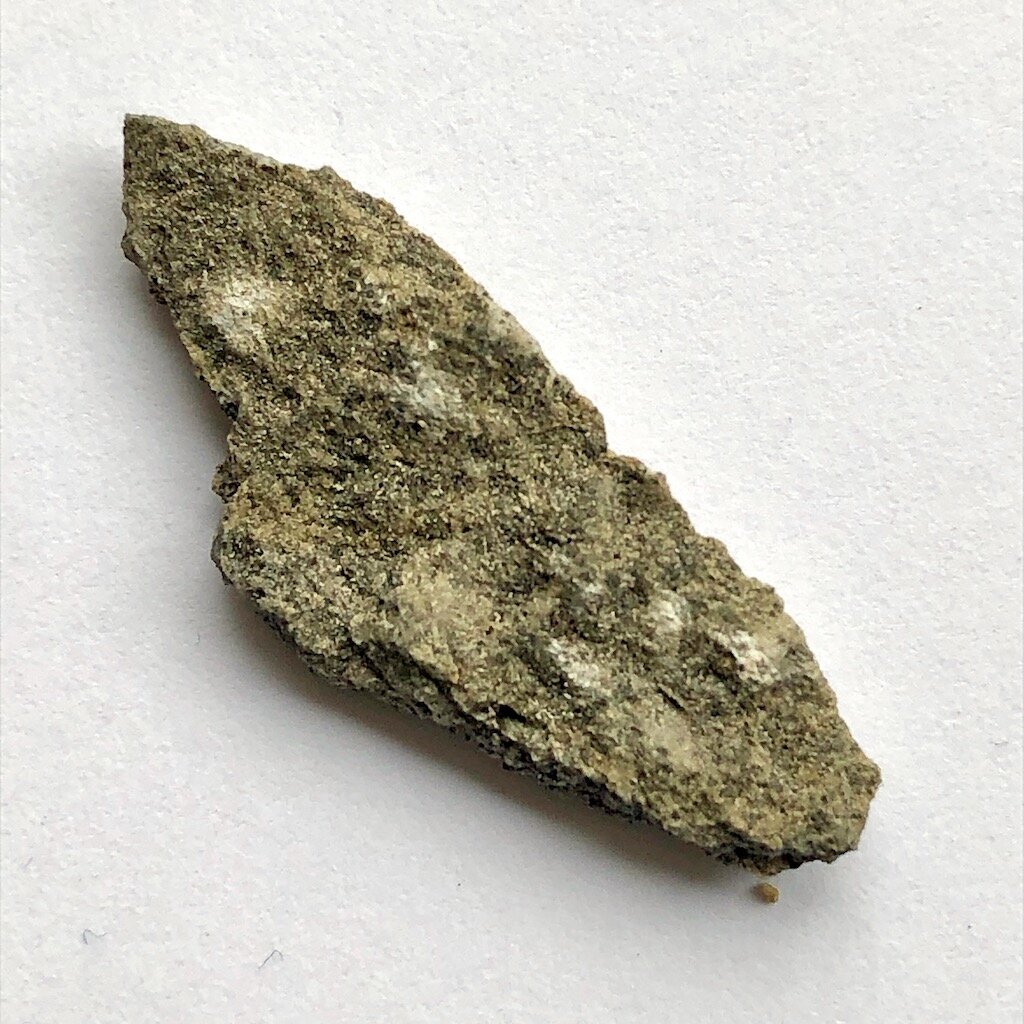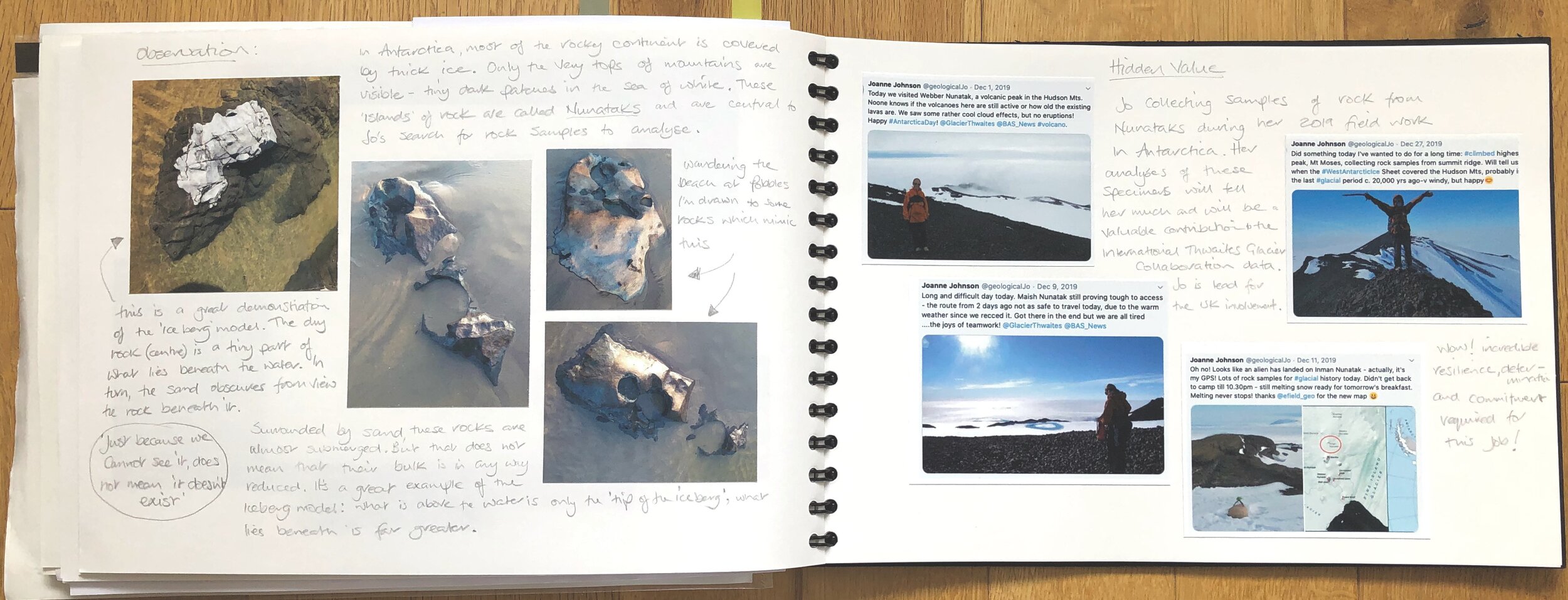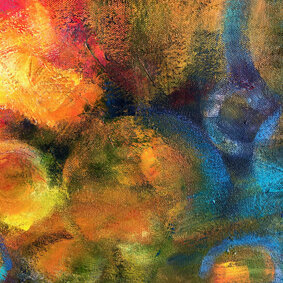No one likes to fail and it’s not easy to embrace failure. But I’m finding that by changing my perception of what failure is, I have begun to do just that. Where once I’d see catastrophe, now I find potential and that has been a liberating experience.
Of course there are many forms of failure and I don’t profess that a change of view can rectify all, in the broader sense.
But in my work, where in particular I’m looking at both the physical make up of geology and the processes by which it is made, I have seen great benefit in working with what once I would have discarded.
The universe and earth itself are in continuous flux and have been since the beginning of time. Melting, solidification, grinding, folding, upheaving, bursting forth and so on, occur in an endless cycle of re-working. This underpins my philosophical view that all is interconnected and supports the notion that nothing is ever lost, it only changes form.
In destruction, therefore, there is creation. Taking this as my lead and opening my mind to relinquishing control, I have found space for re-evaluation through creative practice. This acceptance of chance and chaos over intention brings excitement and reward beyond the expected.
Failure is also a rich source of education. Learning from what went wrong, and finding ways to avoid repetition of perceived mistakes, provides both new insight and the encouragement to keep going!
Additionally, we live in a world where the throwaway society of modern times has done, and continues to do, untold damage to the biosphere on which we depend for survival. So, from an ethical stance, and following the lead of creation itself, reusing and recycling precious materials wherever possible is an absolute necessity. Rebooting our selves to see what something can become, instead of only what it was meant to be, can work in all walks of life. It contributes enormously towards strengthening a circular economy in which we should all play our part and, without doubt, uphold as a priority.
